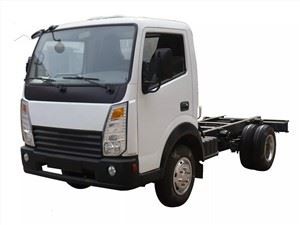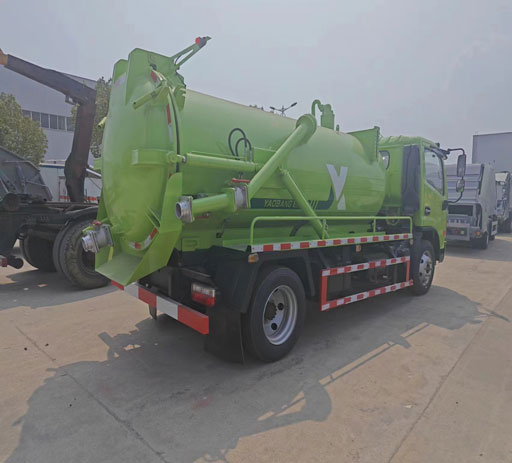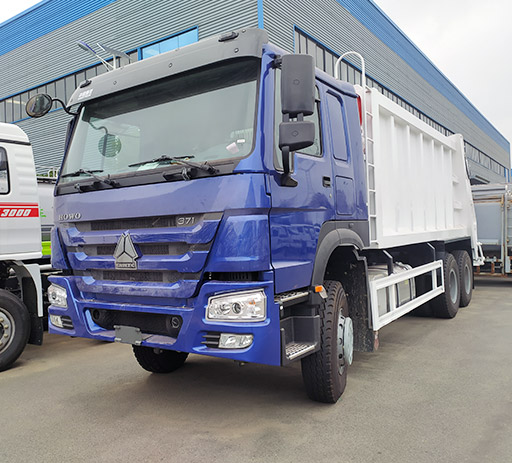Everything You Need to Know About Non CDL Trucks
Introduction
For many businesses and individuals, non-CDL trucks offer a versatile and efficient solution for transporting goods without the complexity of obtaining a Commercial Driver’s License (CDL). Whether you are a small business owner looking to deliver products locally or someone who needs a powerful vehicle for personal use, non-CDL trucks can fulfill a variety of needs. This article will provide a comprehensive overview of non-CDL trucks, including types, features, regulations, practical tips for use, and frequently asked questions.
What Are Non CDL Trucks?
Non-CDL trucks are vehicles that do not require a Commercial Driver’s License to operate. Generally, these trucks have a Gross Vehicle Weight Rating (GVWR) of 26,000 pounds or less. This weight limit allows drivers to operate the vehicle with a standard driver’s license, making it accessible to a broader range of users.
Types of Non CDL Trucks
There are several types of non-CDL trucks that cater to different needs. Here are some of the most common types:
1. Pickup Trucks
Pickup trucks are versatile vehicles that can be used for personal or commercial purposes. They are available in different sizes and configurations, including half-ton, three-quarter-ton, and one-ton models.
2. Cargo Vans
Ideal for transporting goods in urban settings, cargo vans provide ample storage space while maintaining a compact size. They are commonly used for delivery services, trades, and small businesses.
3. Box Trucks
Box trucks, also known as cube trucks, feature a separate cargo area from the cab, offering a significant space for moving larger items. Although many box trucks are classified as CDL vehicles, specific models meet the non-CDL requirements.
4. Flatbed Trucks
Flatbed trucks have an open platform that allows for easy loading and unloading of materials such as building supplies and machinery. They are popular in construction and landscaping industries.
Advantages of Non CDL Trucks
Using non-CDL trucks comes with several benefits:
1. Accessibility
Because they do not require a CDL, non-CDL trucks can be operated by almost anyone with a regular driver’s license.
2. Cost-Effectiveness
They are typically less expensive to purchase and operate. Additionally, avoiding CDL training and licensing fees can save drivers money.
3. Versatility
Non-CDL trucks can be adapted for various uses, including moving, delivery, and carrying equipment for different trades.
4. Easier Maintenance
Maintaining a non-CDL truck can be less complex than managing a larger commercial vehicle since they are often simpler in design.
How to Choose the Right Non CDL Truck
Choosing the right non-CDL truck depends on several factors:
1. Purpose of Use
Determine the primary use of the truck. Will it be for personal transport, business deliveries, or transporting equipment? This will guide your choice significantly.
2. Weight Capacity
Ensure that the truck’s weight capacity aligns with your needs. It’s essential to consider the total weight of the load, including any passengers or equipment.
3. Size and Maneuverability
Consider whether you need a larger vehicle for more significant loads or a smaller one for navigating tight city streets.
4. Fuel Efficiency
Look for models known for better fuel efficiency, which can save costs over time, especially for business use.
Table: Comparison of Popular Non CDL Trucks
| Type | Typical GVWR | Best For | Average Price |
|---|---|---|---|
| Pickup Truck | Up to 12,000 lbs | Personal and light commercial use | $25,000 – $45,000 |
| Cargo Van | Up to 10,000 lbs | Deliveries and small transport | $30,000 – $50,000 |
| Box Truck | Up to 26,000 lbs | Moving and delivery | $30,000 – $60,000 |
| Flatbed Truck | Up to 26,000 lbs | Construction and heavy equipment | $35,000 – $70,000 |

Regulations and Requirements for Operating Non CDL Trucks
While non-CDL trucks do not require a special license, operators must still be aware of various regulations:
1. Weight Restrictions
Ensure the vehicle’s GVWR is within the non-CDL limits to avoid fines or penalties. Overloading can lead to dangerous situations.
2. Insurance Requirements
Every non-CDL truck must have insurance. Business owners might need specialized commercial auto insurance. Check state-specific requirements.
3. Safety Inspections
Regular maintenance and safety inspections are often required, especially if the vehicle is used for commercial purposes.
4. Additional Permits
Depending on your location and the type of goods being transported, special permits may be necessary, even for non-CDL trucks.
Best Practices for Operating Non CDL Trucks
To maximize the efficiency and safety of operating non-CDL trucks, consider these best practices:
1. Pre-Trip Inspections
Always conduct a thorough inspection before driving. Check the vehicle’s tires, lights, brakes, and fluid levels to ensure everything is in working order.
2. Load Management
Distribute weight evenly when loading to enhance stability and safety while driving. Overloading in one area can make handling difficult.
3. Maintenance Records
Keep detailed records of maintenance and repairs. This information is crucial for resale value and ensures compliance with safety standards.
4. Driving Practices
Maintain safe driving practices, including obeying speed limits, using turn signals, and being cautious in adverse weather conditions.
Common Uses for Non CDL Trucks
Non-CDL trucks serve many purposes across various sectors. Here are some common uses:
1. Local Deliveries
Businesses often utilize non-CDL trucks for local deliveries of goods, providing a cost-effective solution for logistics.
2. Construction
In the construction industry, these trucks can transport tools, equipment, and materials efficiently, making them indispensable at job sites.
3. Moving Services

Many moving companies use non-CDL box trucks to facilitate residential and commercial relocations. They offer sufficient space without the need for a CDL.
4. Personal Use
Individuals may use non-CDL trucks for personal reasons, such as moving furniture, hauling recreational equipment, or transporting family and friends.
Tips for Financing a Non CDL Truck
Financing a non-CDL truck can be a significant investment. Here are some tips to consider:
1. Research Different Financing Options
Explore various options, including bank loans, dealer financing, and credit unions, to find the best rates and terms suitable for your budget.
2. Evaluate Your Budget
Determine your fiscal capacity, considering down payments and monthly payments that align with your income and expenses.
3. Check Your Credit Score
A higher credit score may enable you to secure better financing rates. If your score needs improvement, consider taking steps to boost it before applying.
4. Consider Leasing Instead of Buying
If you don’t need the vehicle long-term, leasing might be a more affordable option, allowing you to drive a reliable truck without the long-term commitment.

Frequently Asked Questions
1. What is the weight limit for a non CDL truck?
The weight limit for a non-CDL truck is a Gross Vehicle Weight Rating (GVWR) of 26,000 pounds or less.
2. Do I need special insurance for non CDL trucks?
While specific insurance isn’t required just for being a non-CDL vehicle, you still need standard vehicle insurance, and businesses may need commercial auto insurance.
3. Can I use a non CDL truck for business purposes?
Yes, non-CDL trucks are commonly used for business purposes, including deliveries and services, as long as they operate within the weight restrictions.
4. Are there any special permits needed for non CDL trucks?
While many non-CDL trucks do not need special permits, certain types of cargo or routes may require additional permits. Check local regulations.
5. How often should I perform maintenance on my non CDL truck?
Regular maintenance is vital for safety and performance. It’s recommended to perform oil changes every 3,000 to 5,000 miles and conduct inspections every few months.
6. What are some affordable non CDL trucks for small businesses?
Affordable options for small businesses include the Ford Transit, Chevrolet Express, and RAM ProMaster, all offering good utility and performance.
